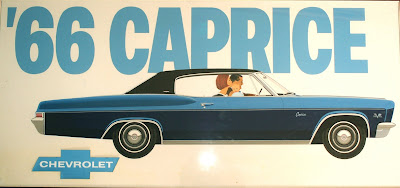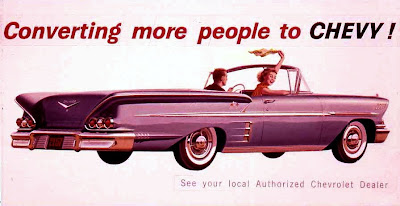
This Caprice board and the two that follow were used to announce the 1966 Chevrolet products. Outdoor was always an important part of the Chevrolet effort to introduce their cars. There were Chevy posters at nearly every important location in America. At the time print advertising--Newspapers, Magazines, and Outdoor made up the bulk of Chevrolet's effort to introduce new products. TV and Radio were important and becoming more important as the months and years passed but for now it was print that carried the load. These boards had one objective--Show the new cars and establish their names. Caprice had been introduce the year before and done very well but there continued to be a need to identify individual Chevys because Chevrolet was becoming a little General Motors within GM. Impala was still very important and Bel Air had been reduced a bit.
These boards, while not particularly memorable, did what they were asked to do. The product illustrations are outstanding examples of the contribution artists made at the time. I still like the simplicity and directness of the executions and am pleased to show them now.








